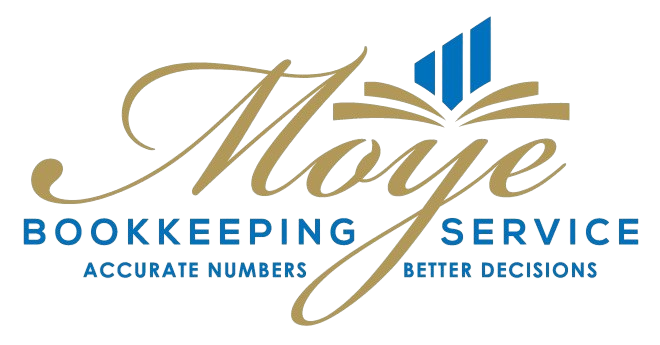Affiliate Disclosure: Please note that this post may contain affiliate links. If you click on a link and make a purchase, we may earn a small commission at no extra cost to you. Thank you!
Managing money today is tough. Costs go up, jobs change, and news about money is everywhere. It’s hard to know where to start.
But what if 2025 is the year you take charge? You can make a plan and succeed.
Inflation was 3.5% in June 2024. Interest rates are near 5.5%, and jobs are plentiful. These numbers affect our money plans every day. This article will help you budget for 2025 and tackle today’s money challenges.
We’ll share budgeting tips for 2025. You’ll learn to track expenses and save for emergencies. Every advice is to make your money journey easier.
Let’s turn money worries into steps toward financial stability so you can feel confident about your future.
Why Budgeting Matters More Than Ever in 2025

Today more especially with the current situations, managing our money well is now more important than before. Inflation is 3.2% and mortgage rates are as high as 7.2% in Q1 2025. We must set smart financial goals to deal with these challenges.
Recent Economic Shifts and Their Impact on Personal Finance
- Inflation: 3.2% annual rise (BLS April 2025)
- Housing costs: Median home prices down 5% year-over-year
- Interest rates: Fed keeps rates steady at 5.25% (June 2025 decision)
The Growing Importance of Financial Resilience
“Financial resilience is the new retirement savings priority,” stated the 2025 Federal Reserve Consumer Report.
Job insecurity and economic forecasts show 2025 will be tough and it is already hitting hard on many. Due to the unforeseen circumstances, we need:
- Emergency funds for 6-9 months of expenses
- Regular budget checks (adjust every quarter)
- Apps like Mint or YNAB for tracking
How Proper Budgeting Reduces Financial Stress
| Metric | Without Budgeting | With Budgeting |
|---|---|---|
| Average stress score | 7.8/10 | 4.1/10 |
| Debt delinquency rates | 18% | 9% |
| Emergency fund adequacy | 34% prepared | 67% prepared |
These numbers show financial wellness gets better with budgeting. The APA found budgeting lowers stress by 40%.
The Economic Landscape Shaping Our Financial Decisions

Knowing today’s economic trends is vital for financial forecasting and managing finances during economic uncertainty. Let’s look at what will guide 2025’s financial path.
- GDP Growth Projections: Experts say the U.S. GDP will grow by 1.8% in 2025, according to the Congressional Budget Office.
- Employment Trends: The Labor Department reports job growth will slow to 1.2% this year. This will affect how much money households make.
- Inflation Outlook: The Federal Reserve wants to keep prices stable. They predict core PCE inflation will be 2.3% by the end of the year.
| Indicator | 2024 Q3 | 2025 Projection |
|---|---|---|
| Unemployment Rate | 3.8% | 4.1% |
| Inflation Rate | 3.1% | 2.3% |
| Interest Rates | 5.5% | Hold steady |
“2025’s economic path depends on balancing growth with affordability,” stated the Federal Reserve’s October 2024 report.
These trends influence what are the top financial planning strategies for next year. With higher interest rates, borrowing costs are up. Slower wage growth means we need to spend wisely. Global supply chains are shaky, which affects prices. New tech like AI can help track expenses, but we must use it wisely.
We’re here to guide you through this. Keep an eye out for our next section on budgeting strategies for 2025.
Effective Budgeting Strategies for 2025

Learning the best budgeting strategies for 2025 means using plans that fit today’s world. We’ll look at ways to make a simple effective budget for 2025. We’ll also talk about how to reach your money goals.
The Zero-Based Budgeting Approach
Zero-based budgeting means every dollar has a job. You start each month with zero dollars. Then, you give money to needs, wants, and savings.
Apps like Mint or EveryDollar help track your spending. This way, you make sure you don’t miss any money. It helps cut down on spending on items or things you don’t really need.
Adapting the 50/30/20 Rule
With rising costs, being flexible is key. You might adjust the 50/30/20 rule. For example, you could spend 55% on needs, 25% on wants, and 20% on savings.
The Consumer Price Index shows prices went up 8% in 2023. So, adjust your budget based on where you live and how much you make.
Value-Based Budgeting
Spending should match your values. If you value education, you might spend 15% of your income on tuition. Use tools like Personal Capital to organize your spending by goals.
Digital Envelope System
Forget about cash envelopes. Apps like GoodBudget offer a digital version. They let you set limits for things like groceries or fun.
Using these strategies can help you budget better and it can lead to good financial stability. Try different things, see what works, and change as needed. Your 2025 financial health depends on the choices you make.
Digital Tools Revolutionizing Personal Finance

Modern technology is changing how we handle money. Let’s look at three areas where new ideas are making money management easier:
AI-Powered Budgeting Applications for 2025
Apps like Mint and Personal Capital use AI to understand how you spend money. They give advice based on your lifestyle. For example, MoneyCube uses AI to test financial plans for 2025 without using real money.
- Prediction-based budgeting: AI uses past data to predict expenses.
- Customized advice: Algorithms suggest ways to reach savings goals.
- Automated categorization: Transactions are tagged instantly for clear budget breakdowns.
Automated Savings Technologies
Tools like Digit and Acorns save money without you having to do anything. They have features like:
- Automatic transfers when you get paid.
- “Round-up” savings that invest spare change into high-yield accounts.
- AI-driven analysis to find safe amounts to save based on bills and priorities.
These systems make saving easier by doing the work for you.
Blockchain & Cryptocurrency Considerations
“Cryptocurrency is a tool, not a guarantee,” warns Forbes finance expert Sarah Lin. “Use it strategically, not impulsively.”
Platforms like Abra and Coinbase help track crypto assets with your budget. But, always use strong security like two-factor authentication and diversify. The IRS has new rules for crypto taxes, so keep track to avoid problems.
Be careful with new ideas. Don’t put more than 5% of your savings in risky assets. Always focus on your main financial goals.
Smart Expense Tracking Methods
Good expense tracking is key for managing your budget well. A recent study found that 68% of families using monthly budgeting templates saved 25% more in 2024. Let’s look at some effective methods for today’s money management.
First, pick a method that works for you. Tools like Mint, YNAB, or Excel templates help sort out expenses. For those who like writing, bullet journals, Budget Planner Book or printed trackers are great. The most important thing is to keep doing it regularly.
“Tracking expenses isn’t about spreadsheets—it’s about awareness,” says financial advisor Sarah Chen of Fintech Insights. “Even handwritten notes reveal patterns most apps miss.”
Here’s how to improve your tracking:
- Connect your bank accounts to apps for updates
- Use monthly budgeting templates with colors for better understanding
- Check your spending every week, not just once a month
A 2025 study by the Consumer Finance Association points out common mistakes:
| Issue | Solution |
|---|---|
| Forgetting small buys | Track every $5+ purchase |
| Too many subscriptions | Stop renewals for unused services |
| Unclear categories | Sort expenses into “essentials,” “wants,” and “savings” |
Make your tracking work by taking action. Change your budget management plan every week, not just once a month. Small changes, like cutting streaming or using cash for meals, can help a lot. The best plan is one you use every day.
Building a Robust Emergency Fund
Life is full of surprises, but you can be ready. Emergency fund strategies help you stay prepared. In 2023, 40% of Americans faced unexpected costs. This makes saving more important than ever.
Determining Your Ideal Emergency Fund Size
The old 3-6 month rule doesn’t work for everyone. Start by figuring out what you need. Think about:
- How stable your job is (contract vs. salaried)
- How many people live with you and depend on you for sustenance?
- What health costs you have and do you have insurance?
- How expensive is the area/location of where you are currently?
If you’re self-employed or you work in an unstable place of employment, it will be wise to add additional 1-2 months of living expenses to your emergency fund. Use online tools to update your plan as your life changes.
Accelerated Saving Strategies
Here are ways to save faster:
- Stop spending on things you don’t need (like subscriptions)
- Make money from things you don’t use (like selling items)
- Set up automatic savings every week, not just once a month
- Try savings challenges like saving $5 a day
If you make $50k or more, you could save 3 months’ worth in 6-9 months. Just save $200 a week.
Where to Keep Your Emergency Funds in 2025
Choose places that are easy to get to and safe. The best options for 2025 are:
- High-yield accounts (like Ally Bank or Marcus) with 4-5% APY
- Money market accounts where you can write checks
- Short-term CDs (6-12 months) for saving that’s locked in
Go for FDIC-insured places to keep your savings plans for 2025 safe. Don’t put your emergency fund in the stock market.
Investment Planning in an Uncertain Economy
Investment planning needs to change as the economy moves. With inflation at 3.8% in Q2 2025, we must forecast how rates and market changes will impact our money. First, set aside a part of your budget for growth and keep some for emergencies.
- Short-term (1-3 years): Keep money in safe places like Treasury bills or money market accounts. They protect your money from stock market ups and downs.
- Mid-term (3-10 years: Put 60% in different stocks and 40% in bonds. Check and adjust your mix every quarter to keep your risk level right.
- Long-term (10+ years: Focus on tax-advantaged accounts like Roth IRAs. Growth stocks and ETFs do well over time, even when they drop short-term.
“Market volatility rewards disciplined investors who stick to their plans,” said BlackRock’s 2025 Global Investor Pulse study. “Staying the course reduces emotional decision-making during dips.”
How you spend your money should match your life goals. Don’t sell everything when the market falls—it can hurt your long-term gains. Invest a fixed amount each month to even out price changes. Choose tax-efficient funds like index funds to cut down on taxes.
Check your investment mix every year, more so after big life changes. A 2024 NerdWallet survey showed 68% of people adjusted their investments after inflation went up. Keep up with news but don’t follow every trend. How flexible your budget is will decide how much you can invest without risking your needs.
Adapting Your Budget to Inflation Realities
Inflation is changing how we spend money. To keep up in 2025, we need to make smart changes. Some things cost more than others. We’ll find ways to save without giving up what’s important.
Categories Most Affected by Recent Inflation
Some things are getting more expensive. The Bureau of Labor Statistics says these areas are seeing big price jumps:
| Category | Inflation Rate (2024) |
|---|---|
| Energy | 12% |
| Food | 8% |
| Housing | 7% |
| Healthcare | 6% |
Inflation-Proofing Essential Expenses
- Use cost-cutting techniques like buying non-perishables in bulk during sales.
- Invest in energy-efficient appliances to lower your bills.
- Choose store-brand groceries to save 20–30% on common items.
Leveraging Fixed-Rate Financial Products
Use tools that help fight inflation:
- Lock in fixed-rate mortgages before rates go up.
- Look into Treasury Inflation-Protected Securities (TIPS) for your bonds.
- Refinance variable-rate loans to fixed rates to keep payments steady.
Smart resource allocation helps your budget stay strong. Making small changes in how we spend and use financial tools can protect our money over time.
Tax-Smart Planning for the Year Ahead
When making your financial planning tips for 2025, think about taxes. New rules for 2025 mean you need to act fast. These changes help you reach your smart financial goals better.
The IRS says 68% of people pay too much in taxes. Don’t be one of them. Start making changes now.
“Taxpayers must update withholding forms to reflect 2025’s inflation-adjusted thresholds,” warns the IRS in its 2024 guidance.
Here’s how to save money:
- Put more money into 401(k)s or IRAs. This lowers what you pay in taxes.
- Plan when you get income and make deductions. This can help you pay less in taxes.
- Take advantage of new credits like the Child Tax Credit. It’s available to more people in 2025.
Business owners and investors, listen up:
Keep track of business expenses like mileage and home office. This can save you money. Investors, use tax-loss harvesting to reduce what you owe in taxes. Choosing the right investments is part of budget optimization. Click here for the Small Business bookkeeping Tracker in google sheet, you will be glad you did.
Work with a CPA to make sure your plan fits 2025’s rules. Saving on taxes means more money for you this year.
Balancing Financial Wellness and Life Goals
Financial wellness is more than just numbers. It’s about managing money and enjoying life. With economic pressures rising, 75% of Americans feel money stress affects their mental health. Let’s find ways to plan for financial success that also boosts our happiness.
Integrating Mental Health into Financial Planning
APA research shows 64% of adults feel constant money worries. Start with small steps:
- Set weekly “no-budget-check” hours to reduce stress
- Include mental health retreats in smart financial goals
- Use apps like Moodnotes to track spending-emotion connections
Creating Joy-Fueled Budgets
Make a budget that lets you enjoy life without feeling guilty. Here’s a simple plan:
| Category | Example | Budget % |
|---|---|---|
| Experiences | Family trips | 5-10% |
| Self-care | Meditation courses | 2-5% |
| Hobbies | Art supplies | 3-7% |
Long-Term Vision Alignment
Ask yourself: “Does this month’s budget help us reach our dream life?” For example:
“My emergency fund now includes funds for career transitions, not just crises.”
Link retirement savings to plans for your future. Use tools like wills for financial wellness that benefits your family. Small changes today can make a big difference later.
Your Path to Financial Success Starts Today
Financial success planning means taking action, not just dreaming. Start now to control your money in 2025’s changing economy. Studies show saving early can grow your emergency fund by 15% more than waiting.
Start by organizing your money this week. Collect bank statements, track your spending, and pick a budget app like Mint or YNAB.
Week one is about getting started. Spend 20 minutes each day to plan your income and expenses. Week two is for sorting out your spending to find ways to save more. Free tools like Rakuten puts more back in your pocket especially if you shop online.
By week three, set up automatic savings with apps like Acorns or Ally Bank. Week four is for fine-tuning your plan by reviewing it weekly and adjusting for surprises. Remember, it’s about making progress, not being perfect.
Keep track of your wins, like paying off debt or saving more. If you hit a bump, check your goals and adjust your spending. Use tools like Personal Capital to track your money in real time. Small steps today add up to big changes later.
Don’t wait to save for 2025, as the Bureau of Labor Statistics warns. Saving a little now can lead to big stability later. Start with saving $50 a week or cut 5% from your spending. Remember, you’re not alone in this journey—share your goals with someone or join online forums for help.
Take one step today towards your 2025 financial goals. Whether it’s trying a budget app or setting up automatic savings, every step counts. Let’s create your success plan together, one week at a time.




